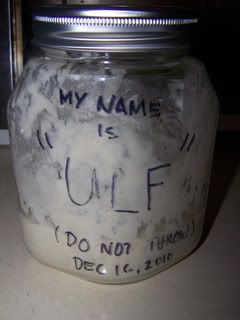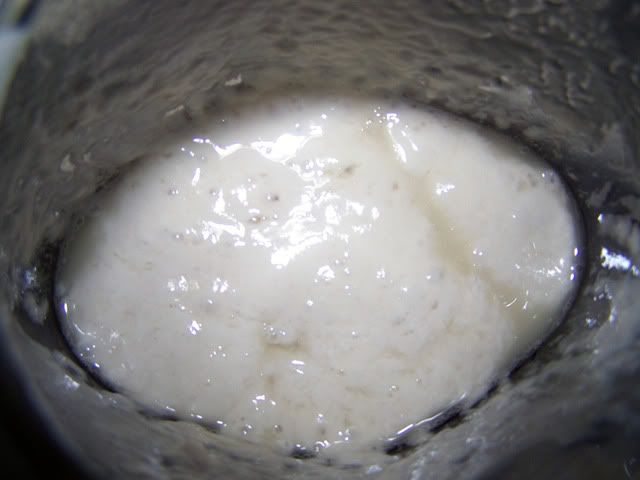
Feeding and using culture, liquid levain and poolish.
Hey All,
I recently finished taking 3 day Parisian Bread class at the French Culinary Institute and just have a few questions about using culture.
In class we did Baguette with poolish, Fougasse aux olives which uses liquid levain, brioche, croissants, le pain de mie straight dough, le pain viennois, and bordelais.
My question is geared toward using poolish, liquid levain, and culture.
I have a culture that i got from the class which I have on a mason jar with holes on the lid, placed inside the fridge, being feed 3 Tablespoons of flour and water every other day.
According to my lavain build recipe:
bread flour. water, culture and ferment for 12-14 hours @ 75F.
So I take about 18g(recipe) of my culture from my jar and include it in this recipe to create my liquid levain? Am I correct? or do I have to do anything else to my culture before I can incorporate this into my levain build recipe? This will give me my liquid levain that i can use for a fougasse or baguette with liquid levain.
As for poolish,
I have a recipe with bread flour, water, fresh yeast and ferment for 12-14 @ 75f the only diff i see is that culture is used to make a levain and this uses a fresh yeast.
As for culture, I have heard that you can have it as a dry form for travel then you can activate it once there..
how do i go about doing this? and how do you re-activate it?
Also, how can you tell if your culture is overfeed or underfeed or no longer usable.




Hi,
when you prepare something liquid it's still poolish, whether with yeast or sourdough; of course you have to specify what kind of levain you use in a recipe, but the reasoning is the same: wait that it triple in volume (or that it's at the top, just beginning to recede) before using it in the main dough.
You can make firm a liquid starter: just add it the amount of flour it needs to become a firm dough (usually the same weight as the sourdough you'll use). I don't trust much dried starters: they may work or not, but surely they are more risky and pesky than solid starters.
but that's simply not true. A poolish (introduced by Polish bakers in the nineteenth century) is a mixture of equal weights of flour and water, with a tiny proportion of yeast added (.08 to 1 percent).
A liquid mixture of sourdough starter, flour, and water is not a poolish and never will be one.
Names are important because they identify people, places, things, and processes - and avoid confusion and disinformation.
See if this answers it:
Natural starters: In general, and on average, you want two things. A levain that amounts to 20% of the final dough by weight and is itself made up of 20% starter. Many use a 100% hydration because it will come to full strength in about 8 hours at 70 degree F and is easy to calculate the flour water contribution to the final dough. So, with a continually refreshed starter (once every few days) you put 40gm in with 100 gm h2o and 100 gm flour to get the levain that you will use 8 hrs later. This gives you a great powerful fermentation agent with not much acidity.
The poolish is a similar product but one to which you add a wee bit of commercial yeast instead of the natural starter. It builds strength in the yeast by forcing it to replicate itself naturally and also ferments the flour that is part of the poolish.
Look at the new Tartine Bread book for a great commentary on all of this. It is one of the best explanations I have read. I also like Dan Wing's explanation in The Bread Builders.
Re: the Culture (aka: starter):
You know your culture is OK by its ability to keep itself active. Here is what I do. Every few days in the morning I take about 20 gm. of my culture and mix it with a fresh 50 gm flour and 50 gm water (no chlorine!). I let this sit, covered, on my counter top while I am at work. Forget the holes in the lid stuff, by the way, it is anerobic and does not need oxygen to thrive but does need to keep from drying out. When I get home in the evening I note that it has fermented nicely and I put it in the fridge and toss out the old culture. Repeat this in a few days. If I need to use it i just make sure that I have enough left to keep my process of refreshment going.
You don't need to dry it to travel or to preserve it. Travel with under 20 gm and you are OK with TSA.
If you loose your starter, just make a new one. It is really easy and there are lots of instructions in books and on-line.